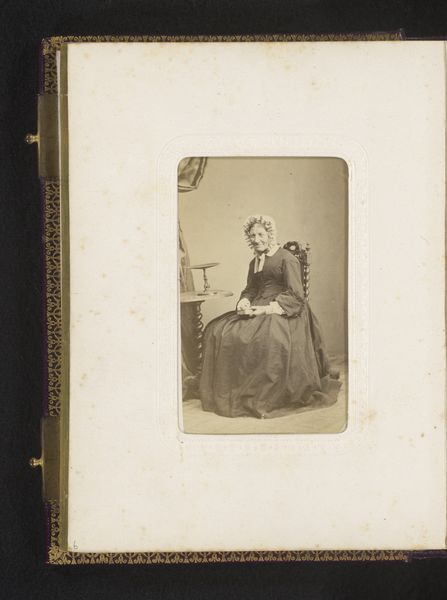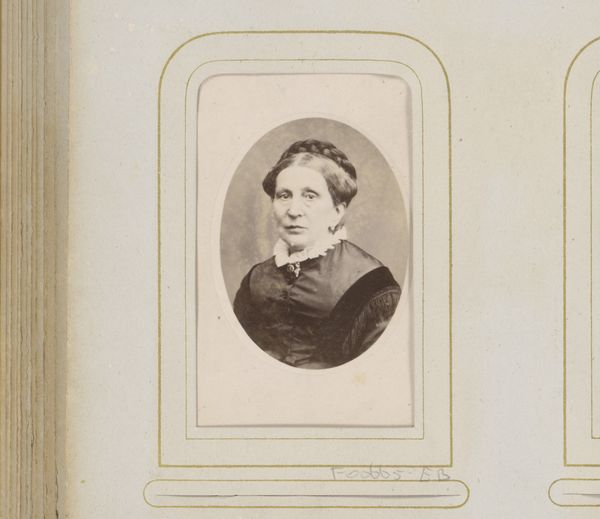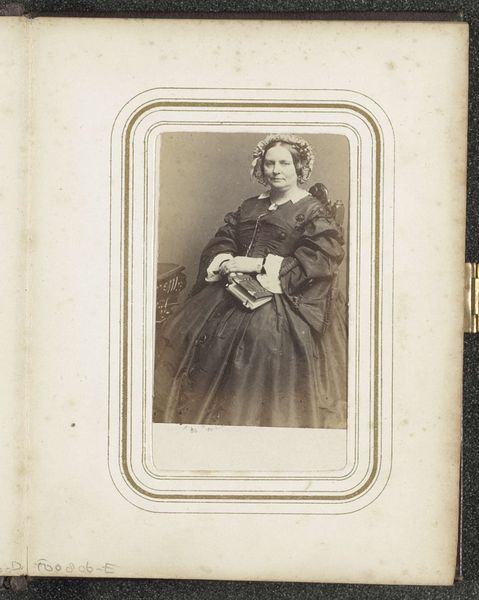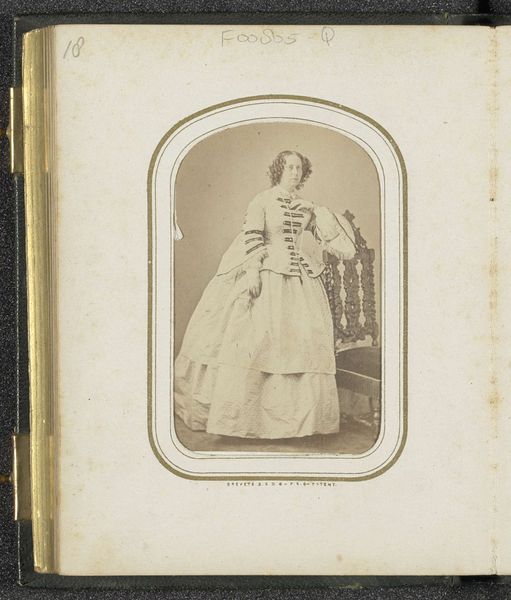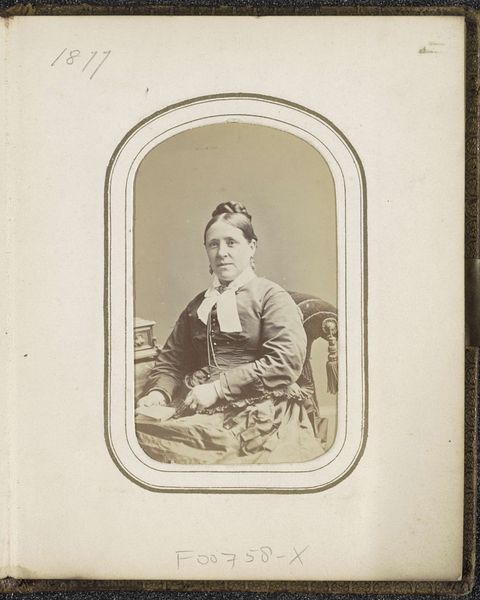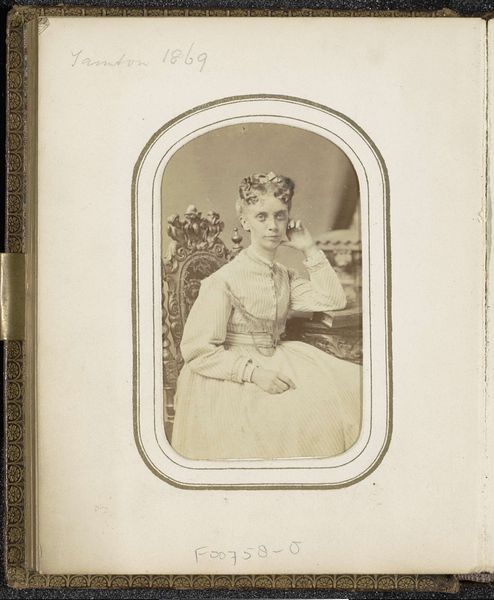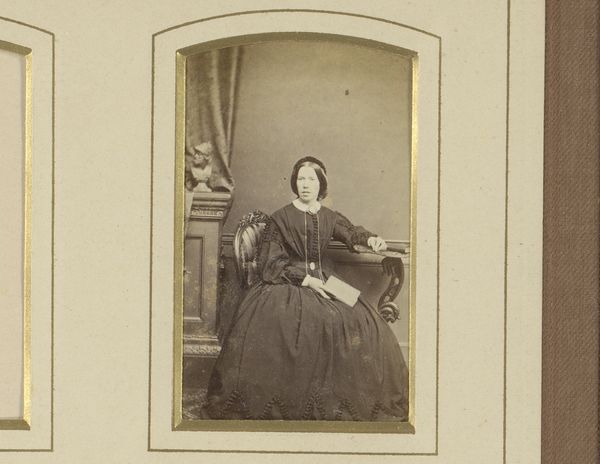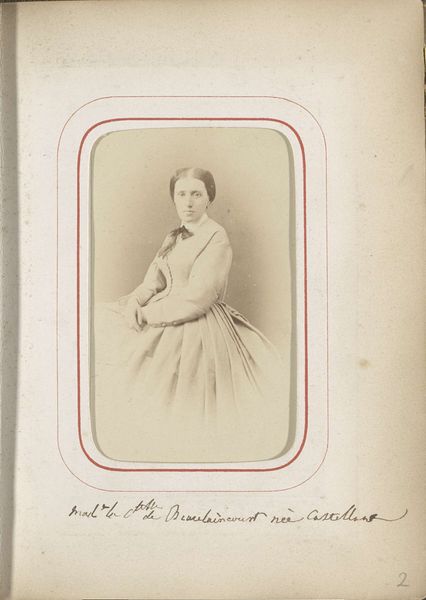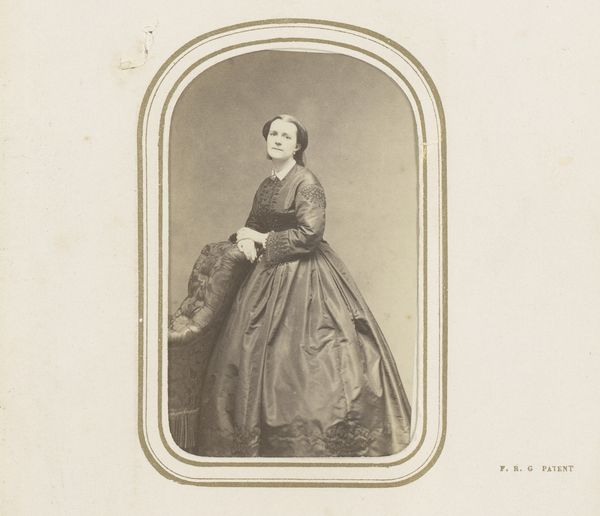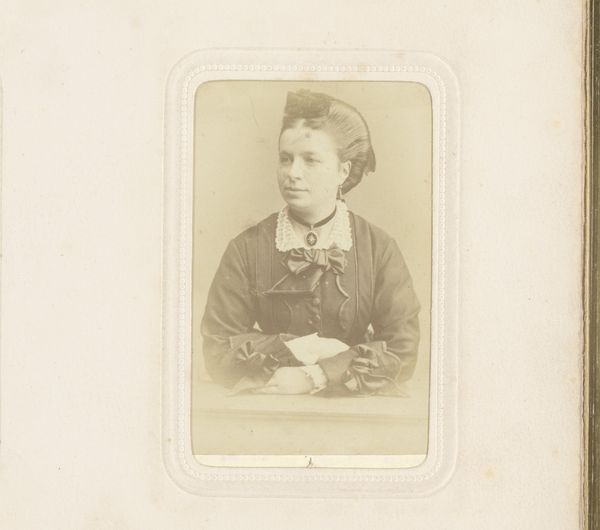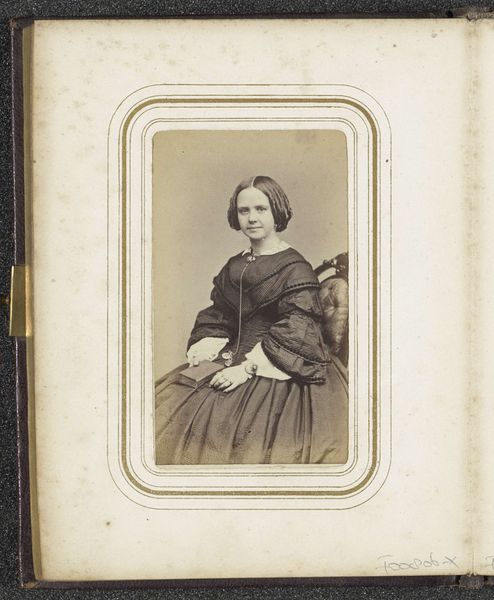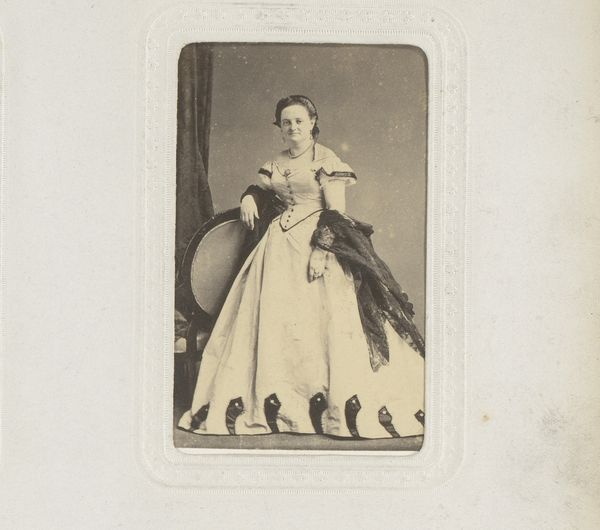
paper, photography
#
portrait
#
paper
#
photography
#
realism
Dimensions: height 86 mm, width 54 mm
Copyright: Rijks Museum: Open Domain
Curator: Here we have a photographic portrait of Louise, Queen of Sweden and Norway, attributed to Heinrich Graf and dating roughly from 1861 to 1885. Editor: There's a certain restraint, wouldn’t you agree? The sepia tones contribute to the quiet dignity, and her pose, seated formally but with hands clasped so demurely… it speaks of composed authority. Curator: Restraint is certainly part of it. Consider photography’s evolving status at the time; such portraits provided accessibility, democratizing imagery for a burgeoning middle class. The choice of paper for the photograph supports this accessible form of visual representation, departing from older, more costly artistic mediums only accessible to the elite. Editor: Indeed, but I'm also drawn to the almost ethereal quality created by the soft focus, especially around her face and lace collar. It nearly renders her saint-like. Are we to read something symbolic in this emphasis on light? Curator: Perhaps. Yet, let us remember the materials and their role. The photograph, presented on paper within this ornamented card, signals an industrialized process. Think of the labour involved— from camera manufacture to chemical development, this portrait is the result of many hands. This challenges our understanding of ‘craft’. Editor: All the same, this light encircling the Queen recalls similar pictorial devices from the Renaissance era used in the visual rendering of idealized Christian figures. Doesn't it suggest that even through these new industrialized processes of photography, there remains that continued connection with much older visual symbols and their enduring hold on us? Curator: No doubt visual languages recycle themselves through generations. What persists is the transformation of base materials through mass production into tokens that cement power structures, in this instance royalty, within cultural memory. Editor: So we meet at a confluence of image, power and its cultural significance. A beautiful, if austere, picture that reflects the material means that made it possible, whilst gesturing towards how we continue to be moved by certain visual cues that still resonate profoundly within our subconscious. Curator: Agreed. It showcases how innovations in reproducibility transform not only artistic creation but our connection to ideas of influence itself.
Comments
No comments
Be the first to comment and join the conversation on the ultimate creative platform.
